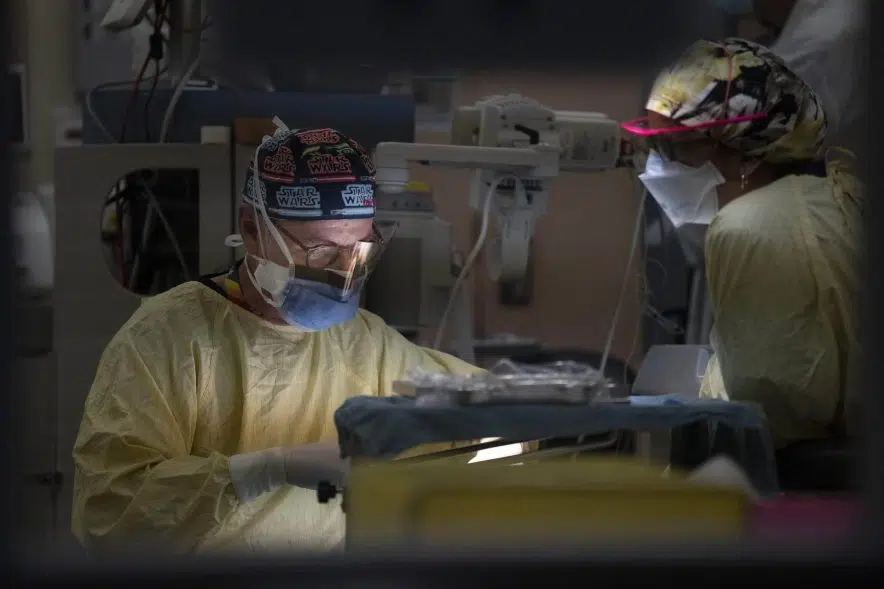The Saskatchewan government says the province’s surgical system is working at a record pace.
In a media release Tuesday, the government said 47,748 procedures were done between April 1 and Sept. 30, the highest total ever recorded in the province in the first six months of a fiscal year.
The total marked an increase of 4,487 procedures, or 10.4 per cent, from September of 2022.
“I want to thank Saskatchewan’s surgeons and their teams for performing the highest-ever number of patients receiving surgeries,” Health Minister Everett Hindley said in the release.
“We are really pleased with this successful path forward due to their hard work and efforts to improve quality of life for thousands of patients. Our government will continue to provide needed supports so the health system can maximize capacity and keep wait times trending downward.”
In July, the NDP pointed out Saskatchewan has the highest wait times in the country.
The Opposition referred to the latest Canadian Institute for Health Information report from 2022, which showed the national average wait time for knee replacements was 198 days. The average wait in Saskatchewan was more than twice that, at 466 days.
The average wait time in Saskatchewan for hip replacements was 309 days, which was nearly twice the national average of 164 days.
In July of 2022, the provincial government said it was looking into options to cut into the wait times, including sending patients to other provinces. That plan raised questions for some organizations, including the Saskatchewan Union of Nurses.
The government noted its investment into publicly funded and privately delivered surgical services has expanded surgical capacity in the province. According to the release, about 19 per cent of all surgeries done since 2020 have taken place in private surgical centres as the government tried to reduce backlogs related to the COVID-19 pandemic.
As well, the government said its Health Human Resources Action Plan could help reduce wait times through the hiring of more staff for surgical teams.
The goal of the plan is to add 1,000 health-care workers to the workforce over the next few years. The government’s investment will total more than $60 million over several years.
“Aggressive surgical targets are in place to surpass last year’s highest surgical volume of over 90,000, ensure 90 per cent of surgeries are performed within 10 months and that no patients are on the wait list longer than 18 months,” the government release said. “In 2023-24, the annual investment for the surgical program is nearly $670 million; that is $144 million, or 27 per cent, more than 2007.”











